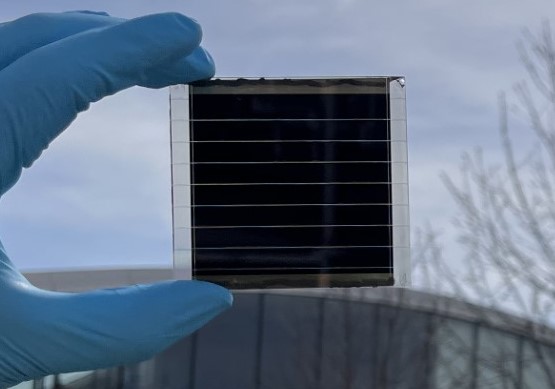An international group of scientists led by the Ecole Polytechnique Fédérale de Lausanne (EPFL) in Switzerland has developed a perovskite solar cell with a 2D/3D heterojunction architecture.
“The cell could be used for all conventional PV systems, as well as for vehicle-integrated solar (VIPV) and building-integrated photovoltaics (BIPV),” the research's corresponding author, Ding Yong, told pv magazine.
The cell uses a 2D perovskite layer at the interface between the perovskite and the hole transport layer, which the researchers said can improve charge-carrier transport/extraction while suppressing ion migration. Cells with this architecture usually exhibit large exciton binding energies and are generally more stable than conventional 3D devices due to the protection provided by the organic ligands.
“The interlaminar molecules in 2D perovskites can effectively saturate the 3D perovskite surface to reduce surface defects during the fabrication process, leading to the formation of a potential energy offset for field-effect passivation,” the scientists stated.
The group built the cell with a substrate made of tin oxide (FTO), an electron transport layer made of titanium oxide (TiO2) and tin(IV) oxide (SnO2), a 3D perovskite layer, a 2D perovskite layer, a spiro-OMeTAD hole transport layer, and a metal contact based on gold (Au).
To fabricate the 2D perovskite absorber, the academics used a precursor known as n-butylammonium iodide (BAI), which they claimed can increase the layer's activation energy to 0.52 eV. “This increase is usually attributed to the larger migration energy owing to the large distance between the interlayer spacings of the 2D perovskite,” they further explained.
Popular content
Tested under standard illumination conditions, the cell achieved a power conversion efficiency of 25.32%, an open-circuit voltage of 1.159 V, and a fill factor of 83.9%. For comparison, a reference device without the 2D layer achieved an efficiency of 23.02%, an open-circuit voltage of 1.120 V, and a fill factor of 78.9%.
“The efficiency value of 25.32% obtained is record-breaking for 2D/3D perovskite-based perovskite solar cells,” the team said, noting that the device was also able to retain 90% of its initial values after 2000 h of operation.
Using this cell, the scientists also built a mini module that reached an efficiency of 21.39%, an open-circuit voltage of 9.416 V, and a fill factor of 80.3%. “We believe that these modules may potentially achieve an efficiency of around 23%,” Yong said. “Their commercial production can be expected in three years. We estimated the costs of the cells at $0.02/kWh, and the energy payback time is 6 months.”
The cell technology is introduced in the paper “Visualizing Interfacial Energy Offset and Defects in Efficient 2D/3D Heterojunction Perovskite Solar Cells and Modules,” published in Advanced Materials. The research group is also formed by scientists coming from the Chinese Academy of Science (CAS) and the Peking University in China.
This content is protected by copyright and may not be reused. If you want to cooperate with us and would like to reuse some of our content, please contact: editors@pv-magazine.com.



By submitting this form you agree to pv magazine using your data for the purposes of publishing your comment.
Your personal data will only be disclosed or otherwise transmitted to third parties for the purposes of spam filtering or if this is necessary for technical maintenance of the website. Any other transfer to third parties will not take place unless this is justified on the basis of applicable data protection regulations or if pv magazine is legally obliged to do so.
You may revoke this consent at any time with effect for the future, in which case your personal data will be deleted immediately. Otherwise, your data will be deleted if pv magazine has processed your request or the purpose of data storage is fulfilled.
Further information on data privacy can be found in our Data Protection Policy.